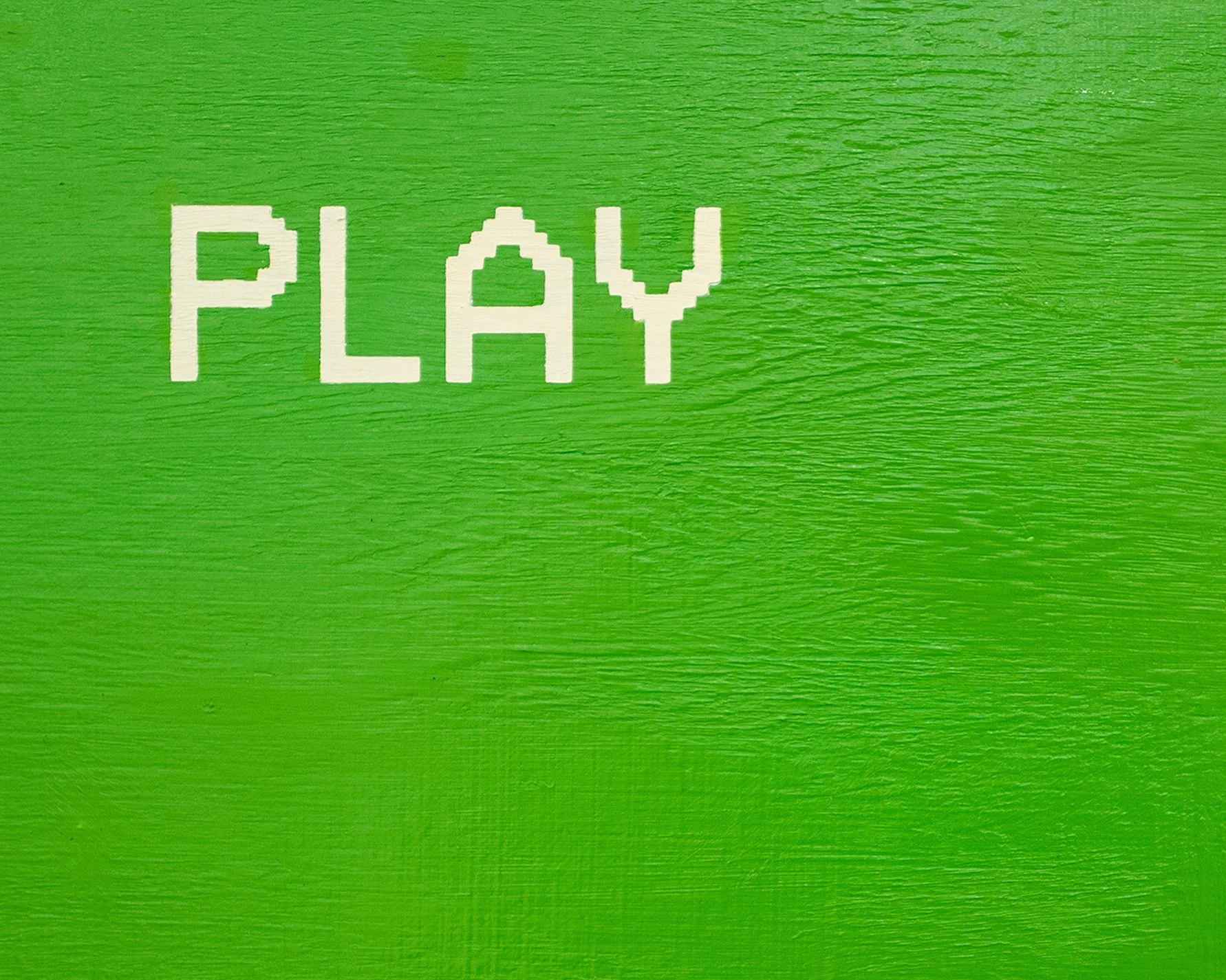Play, 2022
Play, 2022
Oil on linen
41 x 51 cm (16 x 20 in)
Play (2022) captures the visual language of a bygone era, evoking the familiar aesthetics of a VCR playback screen. Rendered on linen canvas, the work flattens the depth of a television monitor into a static, two-dimensional image, framed in black to mimic the borders of a screen. The composition freezes in a moment of transition—caught between "pause" and "play"—inviting the viewer to confront the passive consumption of media. Tan Mu draws inspiration from Neil Postman’s critique in Amusing Ourselves to Death: Public Discourse in the Age of Show Business, which argues that visual media dilutes serious discourse into entertainment. Play reflects on this phenomenon, questioning how screens mediate our experiences and shape our understanding of reality. The irony embedded in the image—a motionless frame branded with the command to "play"—suggests a paradox of engagement and detachment, highlighting the addictive nature of television and the erosion of independent thought in an entertainment-saturated culture.
Q: Your work Play depicts the playback command on early television screens. Could you share the background and inspiration behind this piece?
Tan Mu: This work is inspired by the playback commands commonly seen on early television screens, particularly the "Play" prompt that appeared when inserting a videotape. This imagery evokes a strong sense of visual memory from the television era, especially the green screen that would appear upon pressing the play button. The word "Play" carries multiple layers of meaning—it is not only an instruction displayed on a television screen but also a symbol of entertainment, consumption, and information dissemination. During the television era, people’s leisure time was dominated by TV programs, whereas today, social media and online entertainment have taken center stage. Through this work, I aim to capture that nostalgic visual experience and explore how "Play" has evolved from a simple command into a cultural phenomenon that shapes and influences our lifestyles and values today.
Q: The green hue in the painting realistically captures the feel of a television screen. How did you achieve this visual effect?
Tan Mu: The green horizontal lines and scan-line effect in the painting pay tribute to early television screens. During the creative process, I used oil paint, first allowing a black base layer to fully dry before applying green on top and finally painting the "Play" text. The green areas are painted with thick layers of pigment, creating a highly textured surface. I used a brush to sweep across the paint in horizontal strokes, generating ripple-like stripes that mimic the scan lines and refresh rate effect of a television screen. This approach not only enhances the visual impact of the piece but also allows me to better convey the texture and technical characteristics of early television displays.
Q: How do you see this work in relation to our media-driven society?
Tan Mu: This work reflects the profound impact of media on our ways of living and working. During my university studies, I explored media theory, particularly the evolution from printmaking to digital media. Printmaking, as a form of reproduction, has undergone a transformation from manual replication to digital reproduction, and television and the internet have further accelerated the dissemination and duplication of information. Through this piece, I aim to examine how media have altered our modes of entertainment, consumption habits, and even political perspectives. The word "Play" in the painting is not just a command—it also symbolizes the phenomenon of an entertainment-saturated culture.
Q: You mentioned that Amusing Ourselves to Death has influenced you. Could you elaborate on that?
Tan Mu: Amusing Ourselves to Death prompted me to reflect deeply on the far-reaching influence of television and the internet on society. The book argues that the rise of television has not only changed the way we entertain ourselves but has also reshaped our values and modes of thinking. Although it was written in the 1980s, its predictions remain highly relevant today—perhaps even more so. The speed and influence of the internet have surpassed those of television, making entertainment-driven culture even more pervasive. Through this work, I hope to provoke viewers to consider how media shapes both our society and our personal lives.


